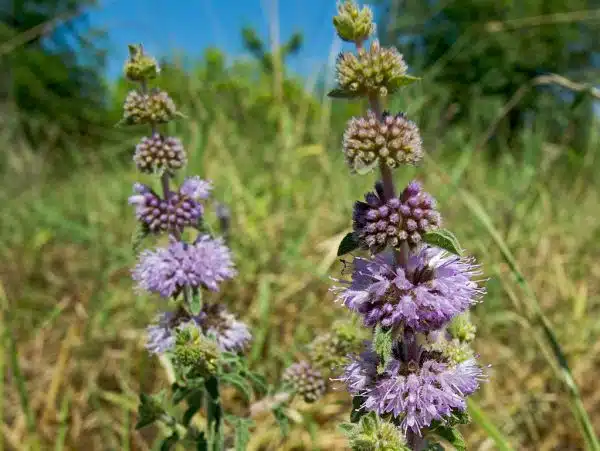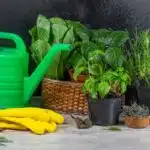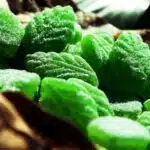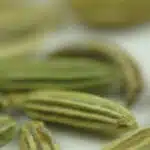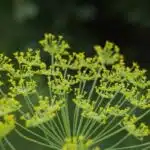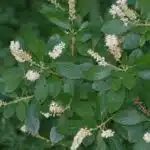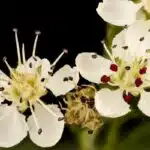Pennyroyal (Mentha pulegium) is a popular herb in the mint family known for its medicinal properties and culinary uses. This perennial plant is native to Europe, Asia, and North Africa but has also been introduced to North America where it is commonly grown in gardens and used as a natural insect repellent. Growing and caring for pennyroyal requires knowledge of its growing conditions, propagation methods, and maintenance practices.
As a horticulturist/herbalist, it is important to understand the various ways that pennyroyal can be used in the garden and in medicine. The leaves of the plant contain essential oils that have been traditionally used to treat digestive problems, headaches, fever, and respiratory issues. Additionally, pennyroyal has insecticidal properties that make it effective at repelling mosquitoes, fleas, and other pests. With proper care and attention to its growing requirements, anyone can successfully grow this versatile herb in their garden or indoor space for both its practical benefits and aesthetic appeal.
Understanding The Characteristics Of Pennyroyal
Pennyroyal (Mentha pulegium) is a perennial herb in the mint family, Lamiaceae. This plant is native to Europe, Asia, and North Africa but has been naturalized in North America. Pennyroyal can grow up to 30 cm tall and produces small purple flowers that bloom in late summer. Its leaves are dark green, round or oval-shaped with toothed margins.
Pennyroyal has been used for medicinal purposes since ancient times. In traditional medicine, it was used as a remedy for digestive issues like bloating and gas. It was also used as an insect repellent due to its strong aroma. Pennyroyal tea was consumed by women to induce menstruation and promote abortion, although this practice is not recommended due to potential toxicity.
While pennyroyal has several benefits, it also has drawbacks. The essential oil of pennyroyal contains a toxic compound called pulegone which can cause liver and kidney damage if ingested in large amounts. Therefore, pennyroyal should be used with caution and under the guidance of a healthcare professional or herbalist. Pregnant women should avoid using pennyroyal as it may cause miscarriage or premature birth.
When growing pennyroyal, choosing the right growing conditions is important for its well-being. This includes providing adequate sunlight exposure and well-draining soil with moderate moisture levels. In the next section, we will discuss how to prepare the soil and planting techniques for successful growth of pennyroyal plants.
Choosing The Right Growing Conditions
Pennyroyal requires full sunlight for optimal growth; the more sun exposure it receives, the more vigorous its growth. The soil should be well-drained, with a pH between 6.0 and 7.0, and compost or manure can be added to improve its fertility. Watering should be done at regular intervals, since the plant is not drought resistant, and it should be watered at the base of the plant to avoid wetting its leaves. Finally, the soil should be kept moist but not soggy, so that the roots receive the right amount of moisture.
Sunlight
As a horticulturist, understanding the effects of sunlight on pennyroyal growth is crucial. Pennyroyal thrives in full sun to partial shade, making it an excellent option for gardens with varying light conditions. However, it is important to note that excessive exposure to direct sunlight can cause the plant’s leaves to wilt and dry out. Therefore, providing ample shade during the hottest parts of the day may benefit pennyroyal growth.
Benefits of appropriate sunlight exposure include stimulating essential oil production in the plant’s leaves. These oils are responsible for pennyroyal’s distinct fragrance and medicinal properties. Additionally, adequate sunlight can promote robust growth and blooming throughout the summer months. On the other hand, risks associated with insufficient or excessive light exposure may result in stunted growth or wilting.
Overall, providing optimal growing conditions for pennyroyal involves considering its unique needs when it comes to sunlight exposure. By planting in an area that receives full sun to partial shade and monitoring for signs of stress due to direct sunlight, growers can reap numerous benefits from this versatile herb. With proper care, pennyroyal can thrive and serve as a valuable addition to any garden or herbalist’s toolkit.
Soil
As a horticulturist, understanding the role of soil in pennyroyal growth is crucial. Soil composition and pH levels are two factors that significantly influence the plant’s overall health and productivity. Pennyroyal prefers well-draining soils with sandy or loamy composition. This type of soil allows water to penetrate easily, preventing excess moisture that can lead to root rot.
Moreover, the ideal pH range for pennyroyal growth is between 6.0 to 7.5. A pH level outside this range may hinder nutrient uptake, resulting in poor growth and development. Gardeners can adjust the soil pH by adding organic matter such as compost or peat moss.
Providing optimal growing conditions for pennyroyal includes selecting the right soil type and maintaining suitable pH levels. By using well-draining soils with a pH range between 6.0 to 7.5, growers can create an environment that promotes healthy root development and nutrient absorption. With proper care, pennyroyal can thrive and provide numerous benefits as a versatile herb in any garden or herbalist’s toolkit.
Soil Preparation And Fertilization
Pennyroyal thrives in well-drained, fertile soil with a pH level ranging from 6.0 to 7.5. It is also essential to choose a location that receives full sun or partial shade for optimal growth. In preparing the soil, it is advisable to remove any rocks, weeds, and debris that may hinder root development.
Composting benefits are numerous when it comes to growing pennyroyal. Compost provides crucial nutrients such as nitrogen, potassium, and phosphorus that are essential for plant growth and development. Additionally, compost increases soil fertility by improving its structure and water-holding capacity. Mulching techniques can also be employed to regulate soil temperature, reduce weed growth, and prevent moisture loss.
To prepare the soil adequately for planting pennyroyal, one should incorporate compost into the topsoil and cover it with a layer of organic mulch such as straw or leaves. This technique ensures that the plant gets enough moisture while keeping weeds at bay. Regular watering is necessary during the establishment phase until the plant is firmly rooted in the ground.
In preparing pennyroyal for propagation, selecting high-quality seeds is vital for healthy plant growth. The seeds should be fresh and stored under dry conditions before sowing them in well-prepared soil. Properly storing the seeds enhances their germination rate and improves their chances of developing into healthy plants ready for transplanting into your garden or herb bed.
Seed Selection And Propagation
When it comes to growing pennyroyal, selecting the right seeds is crucial for success. It is recommended to obtain fresh seeds from a reputable supplier or harvest them during the flowering season. The harvested seeds should be stored in a cool and dry place, away from direct sunlight and moisture. Proper seed storage can ensure better germination rates, which is essential for growing healthy plants.
Germination techniques play a significant role in growing pennyroyal from seed. One of the best ways to start pennyroyal seeds is by sowing them directly into the soil or starting them indoors under grow lights. Before sowing, the soil should be prepared by adding organic matter such as compost or aged manure. Pennyroyal seeds require light to germinate, so they should be sprinkled on top of the soil and lightly pressed down. To keep the soil moist, cover it with a plastic wrap until germination occurs.
Hybridization and crossbreeding possibilities are relatively low in pennyroyal due to its tendency for self-pollination. However, if hybridization does occur, it can result in variations in plant size, leaf color, and aroma intensity. To maintain pure strains of pennyroyal, care should be taken when planting multiple varieties close together.
Moving onto transplanting and planting techniques…
Transplanting And Planting Techniques
Transplanting and Planting Techniques:
When it comes to growing pennyroyal, transplanting is an important aspect that needs to be considered. It is not uncommon for pennyroyal to outgrow its container, which can lead to stunted growth or even death. Therefore, it is recommended to transplant the plant every year or two.
Container gardening is a great way to grow pennyroyal as it allows for easy movement and maintenance of the plant. When transplanting, choose a container that is at least 12 inches deep and wide. Ensure that the container has drainage holes at the bottom to prevent waterlogging. Fill the container with well-draining soil and position the plant in the center before covering with more soil.
Seasonal planting can also have an impact on the growth of pennyroyal. The best time to plant this herb is during spring or fall when temperatures are mild. During these seasons, pennyroyal can thrive without being exposed to extreme heat or cold temperatures that may stunt its growth. Additionally, ensure that you place the transplanted pennyroyal in a location that receives partial shade for optimal growth.
Moving onto watering and irrigation techniques, proper watering is essential for the growth and survival of pennyroyal plants. Stay tuned for our next section where we will discuss how much water your pennyroyal plant needs and how often you should water it to maintain its health and vigor.
Watering And Irrigation
Proper watering and irrigation are essential in growing and caring for pennyroyal. It is important to keep the soil consistently moist, but not waterlogged. Overwatering can lead to root rot and other diseases that can harm or kill the plant. One effective way to water pennyroyal is through drip irrigation, which slowly drips water directly onto the soil, minimizing water waste and preventing moisture from sitting on the leaves.
The frequency of watering pennyroyal depends on various factors such as weather conditions, humidity levels, soil type, and pot size. During hot summer months or dry periods, it may be necessary to increase watering frequency to keep the soil moist. On average, pennyroyal needs to be watered once a week during cooler months or less frequently if grown in a humid environment or planted in well-draining soil.
Incorporating proper watering techniques into your pennyroyal care routine can help ensure its healthy growth and longevity. With drip irrigation as an efficient method of delivering water and monitoring its frequency according to environmental factors, you can minimize the risk of overwatering or underwatering your plants. In the next section, we will discuss pruning and maintenance techniques that will further enhance your ability to cultivate robust pennyroyal plants.
Pruning And Maintenance
Pruning is an important part of keeping a healthy pennyroyal plant. To support the plant’s growth, mulching and fertilizing should be done on a regular basis, as well as watering and deadheading flowers as necessary. Trimming, weeding, and controlling pests should also be carried out, and diseased branches should be removed immediately. To ensure the healthiest possible plant, thinning, pruning tools, pruning time, pruning techniques, rejuvenation pruning, and winter protection should all be taken into account.
Pruning
Pruning is an essential practice in maintaining the health and appearance of pennyroyal plants. It involves removing dead or damaged parts of the plant to promote new growth and prevent the spread of diseases. Pruning also encourages bushier growth, which can improve the overall appearance of the plant.
When it comes to pruning techniques for pennyroyal, it’s crucial to use sharp and clean tools to prevent damaging the plant. Garden shears or scissors can be used to snip off any dead or damaged leaves or stems. It’s important not to remove more than one-third of the plant at any given time as this can shock the plant and affect its growth.
The timing for pruning pennyroyal depends on your growing zone and climate conditions. In general, it’s best to prune in early spring before new growth emerges from the base of the plant. This encourages new growth while also removing any dead or damaged parts from winter weather. However, if you live in a warmer climate where pennyroyal grows year-round, you can prune throughout the year as needed. Remember that pruning is an ongoing process that requires regular attention and care to ensure that your pennyroyal plants thrive.
Mulching
Maintaining the health and appearance of pennyroyal plants goes beyond pruning. Gardeners also need to consider mulching as part of their plant maintenance routine. Mulching is a practice that involves covering the soil around plants with a layer of organic or inorganic material.
Mulching offers several benefits for pennyroyal plants. It helps retain moisture in the soil, reduces weed growth, and regulates soil temperature by keeping it cool during hot weather and warm during cold weather. Additionally, mulch provides nutrients to the soil as it decomposes over time, which can improve the overall health of pennyroyal plants.
There are different types of mulch available for pennyroyal, including organic and inorganic options. Organic mulches include materials such as bark chips, straw, leaves, and compost. Inorganic mulches consist of materials like gravel or stones. Both types can be effective in maintaining healthy pennyroyal plants, but gardeners should select a type that suits their specific needs and climate conditions. Regardless of the type chosen, applying a layer of mulch around pennyroyal plants is an easy way to protect them from external factors while promoting their growth and development.
Pest And Disease Management
Integrated pest management is a combination of cultural, biological, and chemical methods to control pest infestation in plants. When it comes to pennyroyal, keep an eye out for aphids, spider mites, and flea beetles. These pests can suck the sap from the leaves and stems of pennyroyal plants, which weakens them and makes them more susceptible to diseases.
To prevent pest infestation in pennyroyal plants, regular weeding and pruning should be done. This will help improve air circulation around the plants and reduce moisture levels that can attract pests. Additionally, companion planting with other herbs such as lavender or basil may help repel some pests naturally.
Natural disease control involves preventive measures such as maintaining proper growing conditions for your pennyroyal plant. This includes good soil drainage, adequate sunlight exposure, and careful watering practices. If you do notice signs of disease such as leaf spot or powdery mildew, remove any affected leaves immediately to prevent further spread. Diluted neem oil or a baking soda solution can also be used as natural fungicides for fungal diseases.
As horticulturists/herbalists, it is important to take a holistic approach in caring for our plants by considering both their physical health and their ability to serve us medicinally. By using integrated pest management techniques and natural disease control methods in growing pennyroyal plants, we are not only ensuring their longevity but also preserving their medicinal properties. In the next section on harvesting and drying methods, we will explore how to maximize these benefits through proper post-harvest handling of our pennyroyal harvests.
Harvesting And Drying Methods
After implementing the proper pest and disease management techniques for pennyroyal, growers should focus on harvesting and drying methods. Just like many other herbs, pennyroyal’s potency is at its peak when it is fresh. However, drying the herb is necessary for long-term storage and packaging purposes.
When harvesting pennyroyal, it is best to do so in the morning after the dew has evaporated but before the sun dries out the essential oils in the leaves. The leaves can be harvested by cutting off stems near their base or by gently plucking individual leaves from the stem. After harvesting, rinse the leaves with cool water to remove any dirt or debris that may have collected on them.
To dry pennyroyal, hang small bunches of stems upside down in a cool, dry place that has good air circulation. It usually takes about two weeks for pennyroyal to completely dry out. Once dried, store it in an airtight container in a cool, dark place away from sunlight. Properly dried and stored pennyroyal can last up to one year.
Storing and packaging dried pennyroyal involves placing it in an airtight container that will preserve its flavor and aroma. Culinary applications of this herb are vast as it can be used to flavor teas, sauces, dressings, soups and stews among others. Its aroma is similar to mint with a slightly bitter taste making it an excellent addition to meat dishes especially lamb as well as fish dishes such as trout or salmon. Pennyroyal oil has also been used for aromatherapy purposes due to its refreshing scent which helps clear nasal passages and relieve headaches.
The culinary uses for pennyroyal are varied and exciting – from adding flavor depth to savory dishes to using its essential oil for aromatherapy benefits. By learning how to properly care for and harvest pennyroyal, growers can ensure they have a steady supply of this versatile herb for both practical and culinary applications.
Culinary Uses For Pennyroyal
Pennyroyal is a member of the mint family and has been used in both culinary and medicinal applications for centuries. It is a hardy, fast-growing herb that can be propagated from seed, cuttings, or division. When growing pennyroyal, it prefers a soil that is evenly moist and well-drained and should be planted in full sun or partial shade. Culinary uses for pennyroyal include using it as a cooking herb, flavoring drinks, and making herbal teas. When used as a cooking herb, pennyroyal has a strong minty flavor that pairs well with fish, poultry, and vegetables. Pennyroyal can also be added to drinks to add a minty flavor to cocktails and mocktails. Lastly, pennyroyal can be used to make caffeine-free herbal teas.
Cooking With Pennyroyal
Delightful aromas and flavors are some of the primary reasons why people love cooking with Pennyroyal. This herb has a long history of culinary use, dating back to ancient times when it was used as a seasoning in dishes, especially in Mediterranean cuisine. Pennyroyal tea is another popular way to use this herb, which is known for its refreshing and invigorating properties. It can be enjoyed hot or cold and is often combined with other herbs like lemon balm or chamomile for an even more delightful taste.
Pennyroyal infused desserts are also becoming increasingly popular among culinary enthusiasts. From cakes to ice cream, this herb adds a unique and delicious flavor to any sweet dish. The best part about using Pennyroyal in desserts is that it pairs well with a wide range of ingredients, including chocolate, fruits like strawberries and blueberries, and nuts like almonds and walnuts. For those who have never tried Pennyroyal infused desserts before, they are in for a real treat!
When cooking with Pennyroyal, it’s important to use it sparingly as it can be quite potent. Additionally, pregnant women should avoid using this herb altogether as it may cause harm to both the mother and the unborn child if consumed in large quantities. As with any culinary ingredient or herb, always ensure that you source your Pennyroyal from reputable suppliers who follow good agricultural practices to avoid any potential health risks. With these precautions in mind, anyone can enjoy the wonderful flavors of Pennyroyal in their meals and indulge in delicious Pennyroyal infused desserts!
Flavoring Drinks With Pennyroyal
Pennyroyal is an herb that has been used for culinary and medicinal purposes for centuries. Its refreshing and invigorating properties have made it a popular ingredient in various dishes, desserts, and beverages. Pennyroyal tea is one of the most common ways to use this herb. It can be enjoyed hot or cold and has a minty flavor that is both soothing and invigorating. Pennyroyal tea is also thought to have several health benefits, including aiding digestion, reducing inflammation, and relieving headaches.
In addition to Pennyroyal tea, this herb can also be used to flavor cocktails. Pennyroyal cocktails are becoming increasingly popular among mixologists who are looking for new ways to incorporate unique flavors into their drinks. The herb’s minty flavor pairs well with gin, vodka, rum, and other spirits. Some popular Pennyroyal cocktail recipes include the Pennyroyal Gin Fizz, the Pennyroyal Margarita, and the Pennyroyal Mojito. These cocktails are perfect for refreshing summer evenings or as an after-dinner drink.
When using Pennyroyal in drinks or any culinary application, it’s important to use it sparingly as its potency can easily overwhelm other flavors. Additionally, pregnant women should avoid consuming this herb altogether as it may cause harm to both the mother and the unborn child if consumed in large quantities. As with any culinary ingredient or herb, always source your Pennyroyal from reputable suppliers who follow good agricultural practices to avoid any potential health risks. With these precautions in mind, anyone can enjoy the wonderful flavors of Pennyroyal in their drinks and elevate their culinary creations with this versatile herb.
Making Teas With Pennyroyal
Pennyroyal has been used for centuries as a versatile herb in culinary and medicinal applications. Its refreshing and minty flavor makes it an excellent addition to various dishes, desserts, and beverages. One of the most popular ways to use Pennyroyal is by making tea. Pennyroyal tea is known for its soothing properties and has been used for many herbal remedies.
To make Pennyroyal tea, you can either use fresh or dried leaves. A simple infusion blend with hot water would help extract the flavors and oils from the leaves. You can steep a few leaves in boiling water for 5-7 minutes, strain it, and enjoy your freshly brewed Pennyroyal tea. It’s recommended to use only a small amount of Pennyroyal when making tea as large quantities might lead to potential health risks.
Pennyroyal tea is considered beneficial for aiding digestion, reducing inflammation, relieving headaches, and other health benefits. However, it’s essential to understand that herbal remedies should be used cautiously and not as a substitute for professional medical advice. Always consult with a healthcare provider before using any herbal remedies or incorporating them into your daily routine.
Medicinal Properties And Uses
Pennyroyal has been used for centuries as a natural remedy for various ailments. It is rich in antioxidants, which help to protect the body against free radicals that can cause cell damage. Some of the most notable benefits of pennyroyal include its ability to reduce inflammation, relieve pain, and improve digestion.
One of the most common uses for pennyroyal is to alleviate menstrual cramps. The herb contains compounds that act as muscle relaxants, helping to ease tension in the uterus and relieve pain. It may also be useful in treating indigestion and other digestive issues, thanks to its carminative properties. Pennyroyal may also have a calming effect on the nervous system, making it useful in treating anxiety and stress-related conditions.
While pennyroyal can be an effective natural remedy for many conditions, it is important to be aware of potential side effects. Ingesting large amounts of pennyroyal can be toxic and cause liver damage or even death. Pregnant women should avoid using pennyroyal altogether, as it can cause uterine contractions and potentially lead to miscarriage or premature labor. As with any herbal remedy, it is essential to seek advice from a healthcare professional before using pennyroyal for medicinal purposes.
Next section topic: Precautions and Safety Considerations
Precautions And Safety Considerations
Pennyroyal is a medicinal herb, but it can be toxic if consumed in large amounts. Therefore, it is important to be aware of any potential interactions with other herbs or medications before ingesting pennyroyal. It is also important to be aware of the potential for an allergic reaction to the essential oils of pennyroyal. Finally, it is important to pay attention to the variety of pennyroyal being used, since the toxicity levels can vary between cultivars.
Pennyroyal Toxicity
Pennyroyal is a common herb used in cooking, but it is also known for its medicinal properties. However, pennyroyal toxicity is a serious concern that needs to be addressed. Symptoms of pennyroyal toxicity include vomiting, abdominal pain, dizziness, seizures, and even coma. In severe cases, it can lead to liver or kidney damage and respiratory failure.
If you suspect pennyroyal toxicity, seek medical attention immediately. Treatment of pennyroyal toxicity varies depending on the severity of the symptoms. Early recognition and intervention are crucial in preventing long-term effects on human health. It’s important to note that there is no antidote for pennyroyal toxicity.
Pennyroyal toxicity not only affects human health but also has negative effects on the environment. Pennyroyal contains pulegone, which is toxic to fish and other aquatic life. It can also harm bees and other beneficial insects when used as an insecticide. Therefore, it’s essential to use pennyroyal with caution and follow safety guidelines when handling this herb.
In conclusion, while pennyroyal has many benefits, precautions must be taken to avoid its potentially harmful effects on both humans and the environment. Understanding the symptoms of pennyroyal toxicity and seeking immediate medical attention can prevent long-term damage to human health. Additionally, using pennyroyal responsibly by following safety guidelines can help protect our environment from its harmful effects.
Herbal Interactions
As a horticulturist/herbalist, it’s important to understand that herbal supplements can interact with prescription medications, leading to potential health risks. The use of herbal supplements has become increasingly popular in recent years, and many people believe that they are natural and safe alternatives to conventional medications. However, herbal interactions can occur when certain herbs are combined with prescription drugs, causing adverse effects.
When taking herbal supplements, it’s crucial to inform your healthcare provider about all the herbs you’re using. Some herbs can affect the way prescription drugs work in the body or cause unwanted side effects. For instance, St. John’s wort interacts with several drugs used to treat depression, anxiety, and other mental health conditions. It can reduce the effectiveness of these medications or increase their side effects.
In conclusion, as a horticulturist/herbalist or someone interested in using herbal supplements for their health benefits, it’s essential to be aware of potential drug interactions. Always consult your healthcare provider before starting any new supplement regimen and inform them of all the herbs you’re using. By doing so, you can avoid potential risks and ensure that you’re getting the most out of your herbal remedies safely and effectively.
Companion Planting With Pennyroyal
Pennyroyal is a versatile herb that can benefit from companion planting. By pairing it with other plants, pennyroyal can help repel pests and attract beneficial insects to the garden. The benefits of companion planting extend beyond pest control, as certain plants can also improve soil conditions and enhance the flavors of neighboring herbs.
When selecting plants to pair with pennyroyal, consider those that will complement its growth habits and preferences. Some common plants to pair with pennyroyal include:
- Lavender: This fragrant herb can help deter mosquitoes and other flying insects while also attracting pollinators to the garden.
- Thyme: A natural insecticide, thyme can help protect pennyroyal from aphids and other pests while also improving soil health.
- Marigolds: These colorful flowers are known for their ability to repel nematodes in the soil, making them an excellent choice for planting near pennyroyal.
By incorporating these companion plants into your garden, you can create a thriving ecosystem that supports the growth of all herbs.
In addition to outdoor gardening, indoor growing is another option for cultivating pennyroyal. With careful attention to lighting and soil moisture levels, pennyroyal can thrive indoors year-round. In the next section, we will explore some tips and tricks for successfully growing pennyroyal in an indoor environment.
Indoor Growing Tips And Tricks
Companion planting with pennyroyal is an excellent way to deter pests and attract beneficial insects to your garden. Pennyroyal’s strong minty scent repels mosquitoes, fleas, and ants, making it a great companion plant for tomatoes, peppers, and other vegetables. It also attracts bees and butterflies which are essential pollinators in the garden.
When it comes to growing pennyroyal indoors, choosing the right container is crucial. Pennyroyal prefers moist soil but does not tolerate standing water well. Therefore, a container with good drainage is essential. You can choose from plastic pots or terracotta pots that absorb excess moisture from the soil. Make sure the pot has enough room for the roots to grow and use well-draining soil.
Lighting requirements for pennyroyal are similar to other herbs like basil or oregano. They prefer at least six hours of sunlight per day but can also thrive under artificial light if necessary. If you are growing pennyroyal indoors, place them near south-facing windows or under grow lights that mimic natural daylight conditions.
| Pros | Cons |
|---|---|
| Can be grown indoors year-round | Can be invasive outdoors |
| Repels pests | Toxic when ingested in large quantities |
| Attracts beneficial insects | Can cause skin irritation |
| Aromatic scent | Not frost tolerant |
In conclusion, growing pennyroyal can be rewarding as long as you provide them with adequate lighting and proper container options. Indoor gardening allows you to enjoy fresh herbs all year round while enhancing your home’s ambiance with their delightful aroma. In the next section, we will address frequently asked questions about growing and caring for pennyroyal.
Frequently Asked Questions About Growing And Caring For Pennyroyal
Pennyroyal is a beautiful and fragrant plant that belongs to the mint family. It has been used for centuries for its medicinal properties and is a popular herb in many cultures. Growing pennyroyal in your garden is easy, but it requires proper care and attention to thrive.
One of the most common mistakes when growing pennyroyal is overwatering. Pennyroyal prefers well-draining soil and can be susceptible to root rot if left in standing water. Another mistake is planting it in too much shade. Pennyroyal needs at least six hours of sunlight per day to grow properly.
Pennyroyal tea has many benefits for your health, including relieving digestive issues, reducing fever, and easing menstrual cramps. However, it should be consumed sparingly as large amounts can be toxic. When harvesting pennyroyal for tea, only use the leaves and stems, avoiding the flowers and roots as they contain higher concentrations of pulegone, which can be harmful if ingested in large amounts. With proper care and attention, you can enjoy the beauty and benefits of pennyroyal in your own garden.
Conclusion
Pennyroyal is a wonderful herb with numerous benefits, but it requires proper care and attention to thrive. Understanding the characteristics of pennyroyal is crucial for its growth and development. This herb prefers moist soil and partial shade, making it an ideal choice for planting in a slightly shaded area.
Soil preparation and fertilization play a vital role in the growth of pennyroyal. Using organic fertilizers can help provide necessary nutrients while avoiding chemical toxins that can harm the plant. Proper seed selection, propagation techniques, transplanting, and planting are all essential aspects of growing pennyroyal successfully.
It’s important to note that pennyroyal should be used with caution as it contains pulegone, which can be toxic in large quantities. Companion planting with other herbs like chamomile or lavender can help deter pests while providing beneficial properties to both plants.
Indoor growing tips and tricks include providing ample light through grow lights or natural sunlight, using well-draining soil mixtures, and regular watering to maintain moisture levels. Additionally, pennyroyal can be grown year-round indoors if given proper care.
Overall, growing pennyroyal requires patience and dedication but is rewarding due to its versatile uses. Whether used for culinary purposes or medicinal benefits such as easing digestive issues or repelling insects naturally, this herb has been appreciated for centuries. So go ahead and give growing pennyroyal a try – you won’t regret it! As they say in the horticulture world: “A green thumb may take time to develop, but the rewards are evergreen.”
Image Credits

